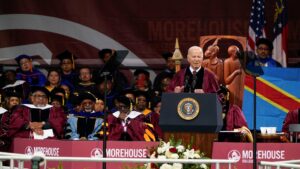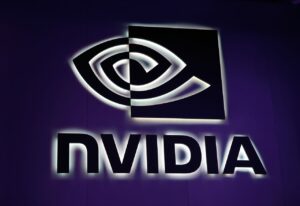The Illinois Northern District Court has dismissed a patent infringement lawsuit brought by OANDA against StoneX.
The relevant judgment was signed by the Honorable John J. Tharp, Jr on February 14, 2024.
Plaintiff OANDA Corporation and defendant StoneX Group, Inc. are both providers of online foreign currency trading and information services. OANDA has sued StoneX for patent infringement pursuant to 35 U.S.C. § 1 et seq, alleging that StoneX’s trading platform infringes three of OANDA’s patents. StoneX has filed a motion to dismiss for failure to state a claim on the ground that a claim against it for patent infringement cannot proceed because the asserted patents are invalid under 35 U.S.C. § 101 as comprising ineligible subject matter.
OANDA is the assignee of the three patents at issue in this case. The innovations claimed in the patents, which the inventors filed with the Patent Office in the early 2000s, enabled OANDA to overcome certain limitations in the nascent years of online foreign currency exchange.
The ‘504 and ‘548 Patents address methods for determining statistical values based on inhomogenous (i.e., arriving at irregular, “tick by tick,” intervals), high-volume time series data.
‘504 Claim 1, the only independent claim of the ’504 Patent, recites nine steps:
- (1) electronically receiving financial market transaction data over an electronic network;
- (2) electronically storing in a computer-readable medium said received financial market transaction data;
- (3) constructing an inhomogeneous time series z that represents said received financial market transaction data;
- (4) constructing an exponential moving average operator;
- (5) constructing an iterated exponential moving average operator based on said exponential moving average operator;
- (6) constructing a time-translation- invariant causal operator omega (z) that is a convolution operator with kernel omega and that is based on said iterated exponential moving average operator;
- (7) electronically calculating values of one or more predictive factors relating to said time series z, wherein said one or more predictive factors are defined in terms of said operator omega;
- (8) electronically storing in a computer readable medium said calculated values of one or more predictive factors;
- (9) and electronically calculating value-at-risk from said calculated values.
In its motion to dismiss, StoneX challenges the asserted patents as directed to ineligible subject matter, specifically to the abstract ideas of analyzing and filtering financial data.
The Court found that OANDA’s arguments were not persuasive. The claims are not rendered sufficiently concrete by virtue of their implementation in computerized currency trading systems. To be sure, OANDA uses computers to carry out the tasks comprised by the patents—and may in fact need to use computers to incorporate the constant influx of new data efficiently/usefully—and the outputs of the innovations are used to facilitate currency transactions that take place on a digital trading platform. But to say that the patents enable online currency transactions or offer technical improvements to the computerized system is to give them too much credit.
Simply put, the ‘504 and ‘548 Patents enable OANDA to provide users of the digital trading platform with certain metrics in the course of using the platform, and the Court assumes for purposes of this motion that these metrics are more accurate and reliable than the metrics that could be provided through the prior art. And so too the Court credits OANDA’s contention that the ‘959 Patent makes it easier to provide instantaneous price quotes and other data with a higher degree of confidence in the quality of the outputs (due to the reduction of data errors).
That OANDA’s patents enable the use of more data and better modes of analysis, however, does not change the essentially abstract nature of the patents in suit: the concepts of obtaining, filtering, and processing data to provide statistical information are abstract regardless of the quality of the process used to do so.
The patents’ reliance on computers to obtain, filter, and process transaction data does not render the concepts less abstract. None of the patents actually augment the technological capabilities of computers to do anything they couldn’t do before.
Examining each of the patents’ claims as a whole, then, the Court concluded that the ‘504 Patent is directed at the abstract concept of using financial market data to measure risk, the ‘548 Patent is directed at the abstract concept of obtaining predictive financial information based on historical market data, and the ‘959 Patent is directed at the abstract concept of filtering financial data for errors.
In short, the patents purport to claim methods for determining financial metrics by collecting, storing, validating, and processing financial transaction data through a series of mathematical algorithms. As such, they are directed toward abstract concepts.
The Court found that the patents do not contain any inventive concepts that take them out of the realm of the abstract. To be sure, OANDA adequately alleges that the asserted patents represent improvements over—indeed, even radical departures from—the prior art. And OANDA’s patents describe techniques that are implemented on computers—and, more specifically, online currency exchange platforms. But no matter how revolutionary these breakthroughs were once implemented in the online currency trading world, or how superior they are to what humans could achieve on their own, or how much they’ve enabled risk evaluation on online currency trading platforms, they are still innovations in the realms of the abstract ideas to which the Court concluded they were directed.
What makes the ‘504 and ‘548 Patents breakthroughs is each’s utility in quickly and accurately deriving statistical information from high-frequency financial data that is grouped in inhomogeneous data sets. What makes the ‘959 Patent new and useful is its ability to filter data for various errors quickly and accurately. These patents do not, however, provide any basis to conclude that the inventive components of the patent claims lie outside of the abstract realm. That aspects of the asserted claims were unknown to the prior art does not suffice to supply an inventive concept.
OANDA has not plausibly and specifically alleged that the ‘504, ‘548, and ’959 Patents’ claims are drawn to eligible subject matter. They are therefore invalid. Accordingly, StoneX’s motion to dismiss the infringement claims against it was granted.
The Court declined to grant OANDA leave to amend because the shortcomings identified throughout this opinion are inextricably bound up in the patent claims and specifications.









